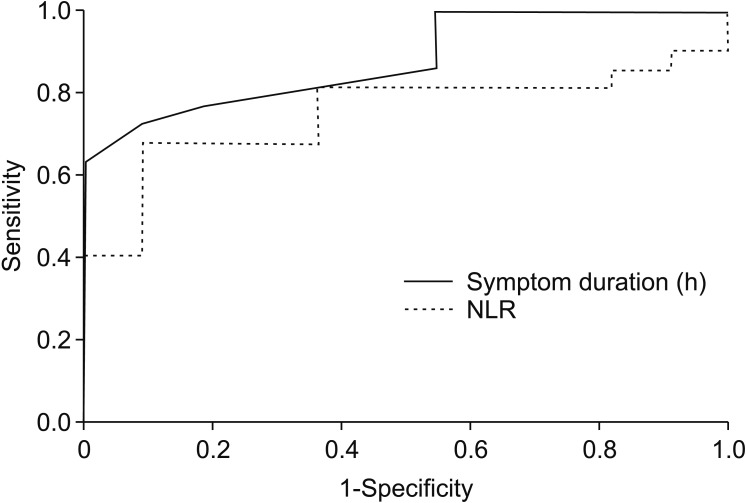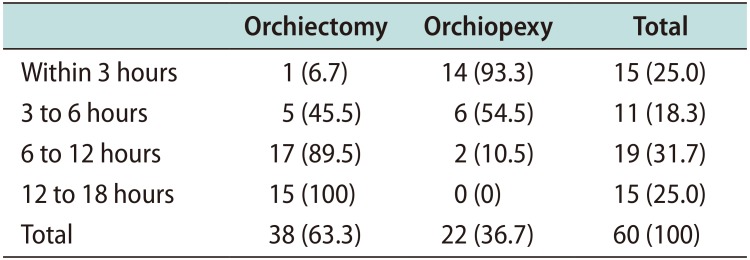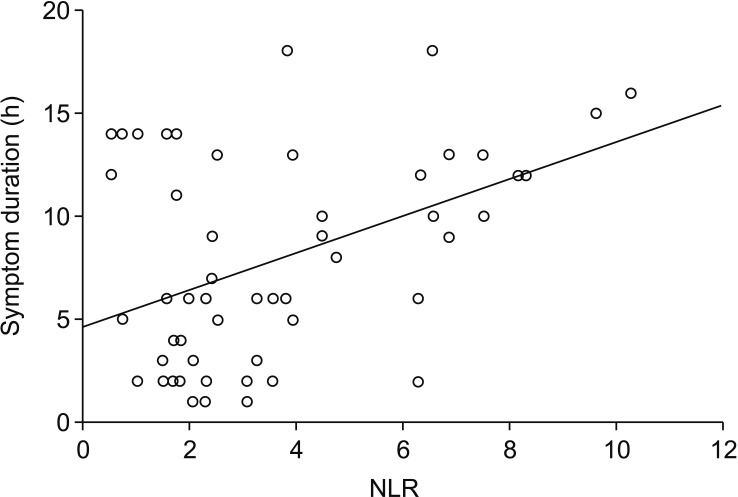1. Zhao LC, Lautz TB, Meeks JJ, Maizels M. Pediatric testicular torsion epidemiology using a national database: incidence, risk of orchiectomy and possible measures toward improving the quality of care. J Urol. 2011; 186:2009–2013. PMID:
21944120.

2. Bodiwala D, Summerton DJ, Terry TR. Testicular prostheses: development and modern usage. Ann R Coll Surg Engl. 2007; 89:349–353. PMID:
17535609.

3. Fisch H, Laor E, Reid RE, Tolia BM, Freed SZ. Gonadal dysfunction after testicular torsion: luteinizing hormone and follicle-stimulating hormone response to gonadotropin releasing hormone. J Urol. 1988; 139:961–964. PMID:
3129583.

4. Selbst SM, Friedman MJ, Singh SB. Epidemiology and etiology of malpractice lawsuits involving children in US emergency departments and urgent care centers. Pediatr Emerg Care. 2005; 21:165–169. PMID:
15744194.
5. Bowlin PR, Gatti JM, Murphy JP. Pediatric testicular torsion. Surg Clin North Am. 2017; 97:161–172. PMID:
27894425.

6. Boettcher M, Bergholz R, Krebs TF, Wenke K, Aronson DC. Clinical predictors of testicular torsion in children. Urology. 2012; 79:670–674. PMID:
22386422.

7. Rampaul MS, Hosking SW. Testicular torsion: most delay occurs outside hospital. Ann R Coll Surg Engl. 1998; 80:169–172.
8. Nasrallah P, Nair G, Congeni J, Bennett CL, McMahon D. Testicular health awareness in pubertal males. J Urol. 2000; 164:1115–1117. PMID:
10958755.

9. Bayne AP, Madden-Fuentes RJ, Jones EA, Cisek LJ, Gonzales ET, Reavis KM, et al. Factors associated with delayed treatment of acute testicular torsion-do demographics or interhospital transfer matter? J Urol. 2010; 184(4 Suppl):1743–1747. PMID:
20728168.

10. Yiee JH, Chang L, Kaplan A, Kwan L, Chung PJ, Litwin MS. Patterns of care in testicular torsion: influence of hospital transfer on testicular outcomes. J Pediatr Urol. 2013; 9:713–720. PMID:
23896260.

11. Barada JH, Weingarten JL, Cromie WJ. Testicular salvage and age-related delay in the presentation of testicular torsion. J Urol. 1989; 142:746–748. PMID:
2769854.

12. Mansbach JM, Forbes P, Peters C. Testicular torsion and risk factors for orchiectomy. Arch Pediatr Adolesc Med. 2005; 159:1167–1171. PMID:
16330742.

13. Güneş M, Umul M, Altok M, Akyuz M, İşoğlu CS, Uruc F, et al. Predictive role of hematologic parameters in testicular torsion. Korean J Urol. 2015; 56:324–329. PMID:
25874047.

14. Kolaczkowska E, Kubes P. Neutrophil recruitment and function in health and inflammation. Nat Rev Immunol. 2013; 13:159–175. PMID:
23435331.

15. Bitkin A, Aydın M, Özgür BC, Irkilata L, Akgunes E, Keles M, et al. Can haematologic parameters be used for differential diagnosis of testicular torsion and epididymitis? Andrologia. 2018; 50:DOI:
10.1111/and.12819.

16. Afsarlar CE, Ryan SL, Donel E, Baccam TH, Jones B, Chandwani B, et al. Standardized process to improve patient flow from the emergency room to the operating room for pediatric patients with testicular torsion. J Pediatr Urol. 2016; 12:233. PMID:
27270069.









 PDF
PDF ePub
ePub Citation
Citation Print
Print




 XML Download
XML Download